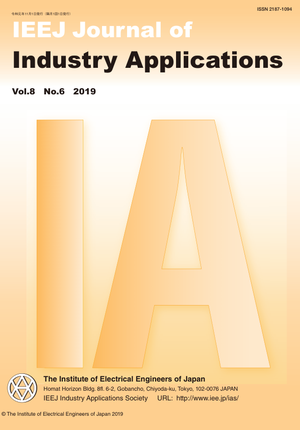Integrated Design of Smart Train Scheduling, Use of Onboard Energy Storage, and Traction Power Management for Energy-Saving Urban Railway Operation
Integrated Design of Smart Train Scheduling, Use of Onboard Energy Storage, and Traction Power Management for Energy-Saving Urban Railway Operation
カテゴリ: 論文誌(論文単位)
グループ名: 【D】産業応用部門(英文)
発行日: 2019/11/01
タイトル(英語): Integrated Design of Smart Train Scheduling, Use of Onboard Energy Storage, and Traction Power Management for Energy-Saving Urban Railway Operation
著者名: Warayut Kampeerawat (Department of Electrical Engineering and Information Systems, Graduate School of Engineering, The University of Tokyo), Takafumi Koseki (Department of Electrical Engineering and Information Systems, Graduate School of Engineering, The
著者名(英語): Warayut Kampeerawat (Department of Electrical Engineering and Information Systems, Graduate School of Engineering, The University of Tokyo), Takafumi Koseki (Department of Electrical Engineering and Information Systems, Graduate School of Engineering, The University of Tokyo)
キーワード: onboard energy storage,railway power management,regenerative power,train scheduling
要約(英語): This paper presents an integrated design of train scheduling, use of onboard energy storage, and traction power management for urban railways. The proposed design aims to integrate the design of train operation and infrastructure to improve energy-saving operation and the flexibility of energy management. The design problem is formulated as the minimization of the energy supplied from substations and the energy capacity of onboard energy storage. By varying the weighting factor, energy-saving purpose and cost-saving purpose can be compromised. To demonstrate the performance of the proposed design, numerical case studies are performed and evaluated on the Bangkok Mass Transit System. From the comparisons of nominal operation and design operating conditions, it is seen that the energy-saving performance is improved by up to 9.65% and the peak power at a substation is reduced by approximately 40%. The design scenario can be simply classified into cheap, moderate, and expensive designs depending on the appropriate adjusting weighting factor. Furthermore, the effect of pantograph voltage is evaluated and discussed. From the results, it is seen that the energy-saving performance is reduced by approximately 1% due to the fluctuation of the pantograph voltage. Even though the variation of pantograph voltage affects the design scheduling, a small deviation in the running time in some sections must be allowed. The proposed design still provides considerable improvement with regard to the energy-saving operations. The proposed design employs an offline design and planning because the design process requires considerable computation time.
本誌: IEEJ Journal of Industry Applications Vol.8 No.6 (2019)
本誌掲載ページ: 893-903 p
原稿種別: 論文/英語
電子版へのリンク: https://www.jstage.jst.go.jp/article/ieejjia/8/6/8_893/_article/-char/ja/
受取状況を読み込めませんでした


